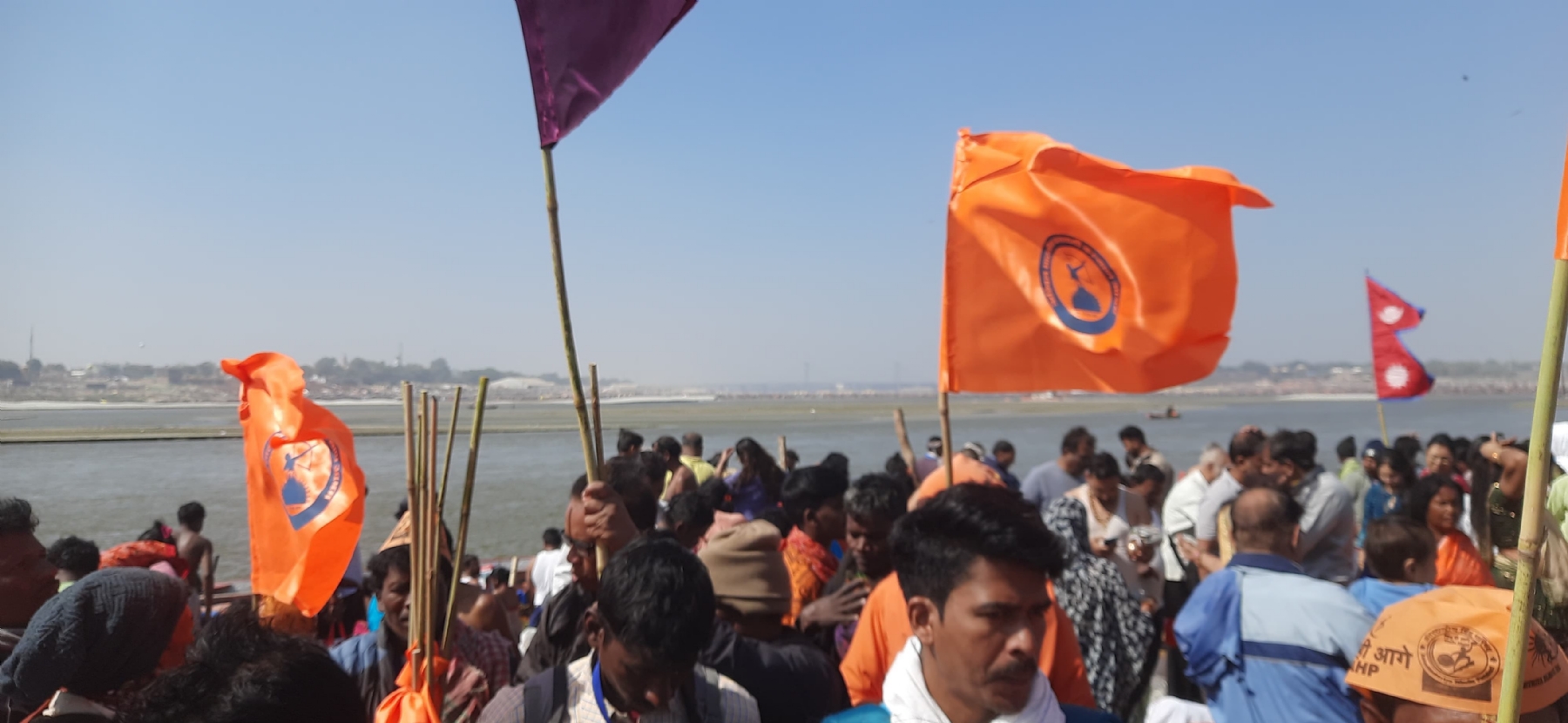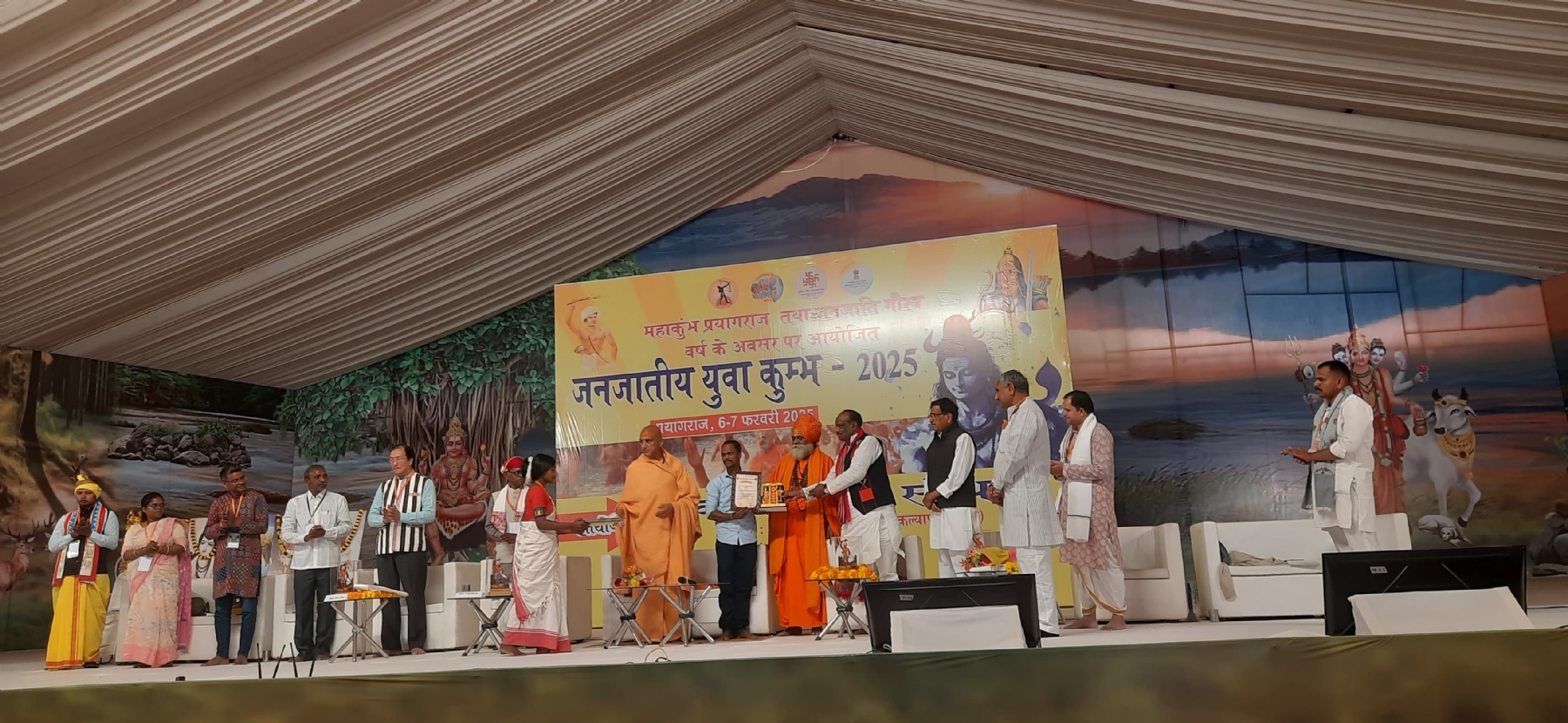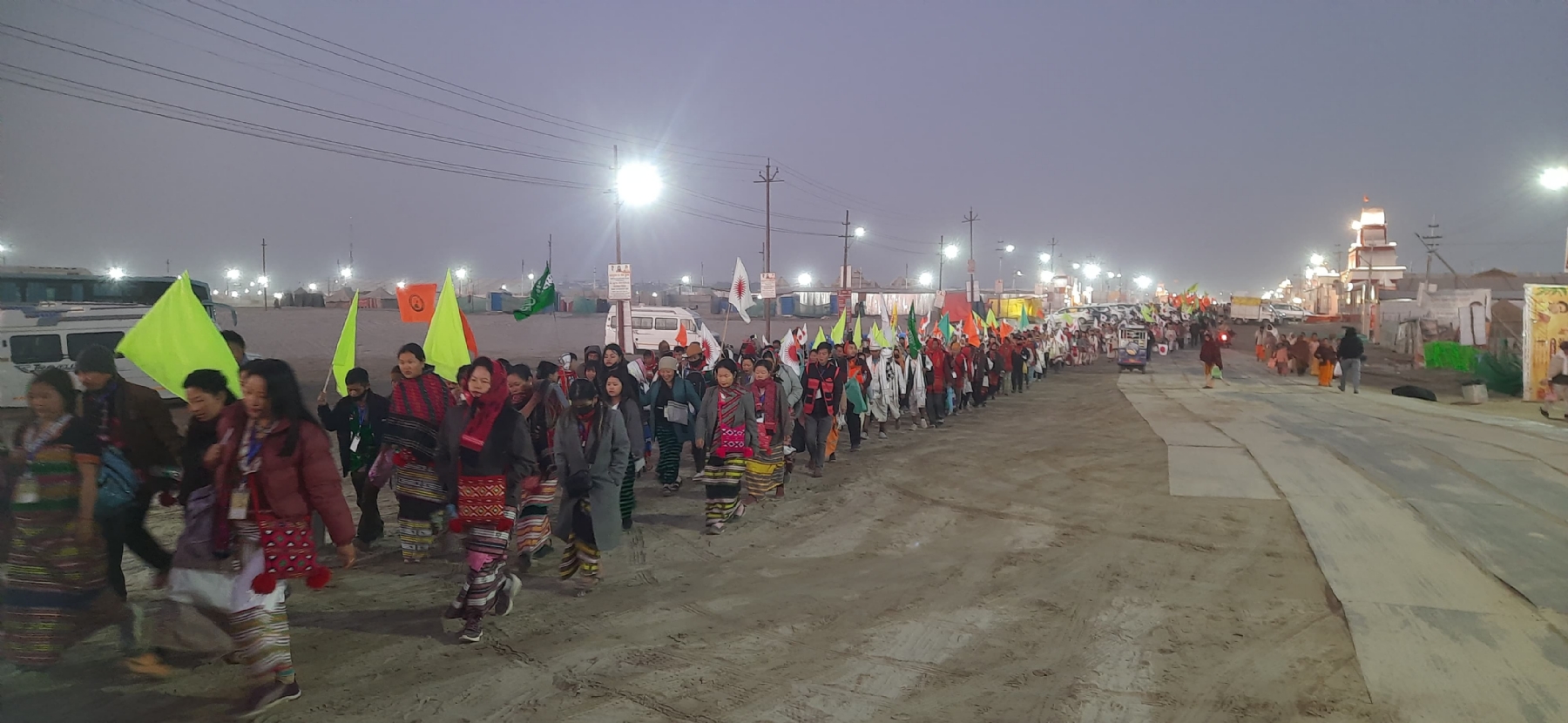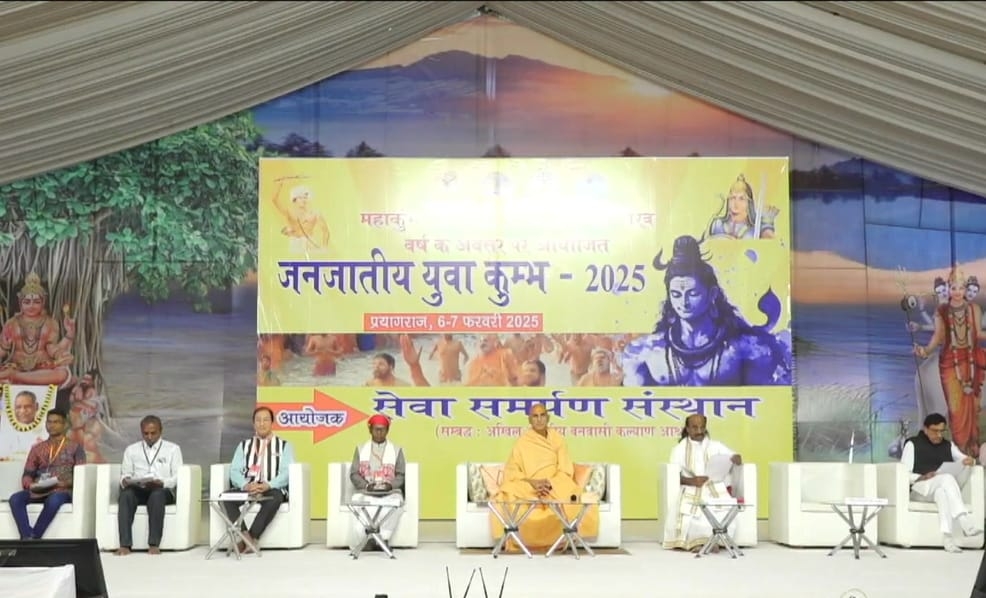Column by Janjati Professor of BHU : My Experience at Mahakumbh
A significant message from the Mahakumbh was the urgent need to counter the external forces attempting to disrupt tribal traditions. The Ministry of Tribal Affairs and dignitaries such as Shri Durgadas Uike called upon the youth to be vigilant and proactive in preserving their faith.

The Mahakumbh at Prayagraj was not just a congregation of faith; it was a grand confluence of culture, tradition, and spiritual consciousness. The tribal society from across the country was deeply connected to this eternal journey of Sanatan culture. Witnessing and participating in this historic event was an experience that left an indelible mark on my soul.
The essence of the Kumbh lies in its message of unity, co-existence, and spiritual awakening. The tribal society, which has always upheld these values in its way of life, resonated deeply with the spirit of Kumbh.
The belief in co-living, charity, and unity has been an integral part of our tribal traditions, and at the Kumbh, these values found their grandest manifestation.
The gathering of thousands of tribal devotees was a testament to the fact that our community is deeply rooted in the Sanatan tradition. This unity was a source of immense strength, as it dispelled any doubts about our place within the cultural and spiritual framework of the country.
The event organised by Vanvasi Kalyan Ashram played a crucial role in bringing together over 25,000 tribal devotees from across the country. It was heartening to see the participation of tribal youth, who pledged to protect their faith, culture, and traditions.

The Yuva Kumbh, held on February 6th, was a spectacular experience, with 10,000 young minds discussing about preserving our heritage. Notably, 20 exceptional youths were honoured for their contributions, inspiring the next generation to take pride in their roots. This recognition encouraged young minds to delve deeper into their traditions, reinforcing the importance of preserving their cultural identity.

The grand Shobha Yatra on February 7th was one of the most mesmerising sights at the Mahakumbh. Thousands of tribal brothers and sisters adorned in their traditional attire, dancing and singing, took a holy dip at the Sangam.

More than 150 dance groups performed their traditional dances, showing India's rich tribal heritage. It was a moving experience to witness the harmony of cultures and traditions merging into one divine rhythm. This event served as a reminder of the resilience and vibrancy of tribal culture, which has withstood the test of time and external influences.
From February 7th to 9th, cultural programs showcased the vibrant arts of different tribal communities. Dance and music, which are intrinsic to our worship and devotion, became an expression of unity and spiritual fervour.
The performances on four different platforms filled the atmosphere with unparalleled energy and devotion. These cultural expressions were not just about entertainment but also about storytelling, history, and the transmission of ancestral wisdom.
The spiritual dimension of the Mahakumbh was further highlighted in the Sant Sammelan on February 10th. The words of revered saints, including Mahamandleshwar Yatindranand Giriji Maharaj, Swami Avdheshanand Giri ji, and Acharya Mahamandleshwar Raghunath Maharaj, reinforced the inseparable bond between the tribal community and Sanatan Dharma.

Their guidance inspired the devotees to uphold their spiritual traditions despite the challenges posed by external influences. Their wisdom provided a roadmap for navigating the modern world while staying rooted in tradition.
Swami Avdheshanand Ji beautifully articulated the essence of our connection with nature and spirituality. He emphasised that the tribal way of life, deeply intertwined with nature, is a living embodiment of Sanatan principles.
His call to protect our traditions and faith resonated strongly with the youth, who are the torchbearers of our culture. This message instilled a sense of duty among the younger generation to actively participate in cultural preservation.
The celebration of Lord Birsa Munda’s 150th birth anniversary added another layer of significance to this Mahakumbh. As a symbol of tribal pride and resistance, Birsa Munda's legacy inspired us to stand firm in preserving our identity. The unwavering efforts of Seva Samaran Sansthan and Vanvasi Kalyan Ashram in uniting the tribal society were commendable. Their dedication ensured the tribal voice was heard loud and clear on such a grand platform.
A significant message from the Mahakumbh was the urgent need to counter the external forces attempting to disrupt tribal traditions. The Ministry of Tribal Affairs and dignitaries such as Shri Durgadas Uike called upon the youth to be vigilant and proactive in preserving their faith.
Their words ignited a sense of responsibility among us to carry forward our cultural legacy with pride. The emphasis on self-awareness and empowerment provided a clear direction for the path ahead.
The Mahakumbh also recognised and honoured key contributors to the tribal movement. Leaders such as Shri Chaitram Pawar, a Padmashree awardee, and several young activists were acknowledged for their efforts in promoting tribal rights and culture.
Their work serves as an inspiration for all of us to continue striving for the empowerment of our community. The recognition of these individuals highlighted the importance of collective effort in preserving and promoting our heritage.
A historic resolution was adopted at the Yuva Mahakumbh, outlining seven key commitments for the tribal youth. These principles will guide us in our mission to safeguard our traditions and ensure that the spiritual consciousness of our community remains unshaken. Articulating these commitments was a crucial step in mobilising the youth to take ownership of their heritage.
As part of the event, I had the privilege of addressing the gathering. I extended my heartfelt greetings to all present and highlighted the significance of the Maha Kumbh as a confluence of faith, culture, and unity. I emphasised how the tribal community has always lived by the mantra of "Sarve Bhavantu Sukhinah" and how our traditions and social life reflect the highest consciousness of the Kumbh.
I spoke about the tribal community’s sustainable way of life, which aligns with nature and offers solutions to global challenges such as climate change. I also addressed the misconceptions being spread about tribal society, asserting that we are not separate from the Sanatan tradition but an integral part of it. I urged my fellow tribal youth to take the message of the Kumbh back to their communities and work for the upliftment of our society with renewed faith and commitment.
The concluding moments of the Mahakumbh were filled with a profound sense of gratitude and renewed determination. As we took our final dip in the holy Sangam, it felt like a divine blessing—a reminder that our traditions are eternal and unbreakable. The Mahakumbh was not just an event; it was a movement, a reaffirmation of our roots, and a commitment to our future.
Article by
_202503061130025896_H@@IGHT_412_W@@IDTH_340.jpeg)
Dr. Ram Shankar Uraon
Assistant Professor
Institute of Management Studies
Banaras Hindu University, Varanasi


